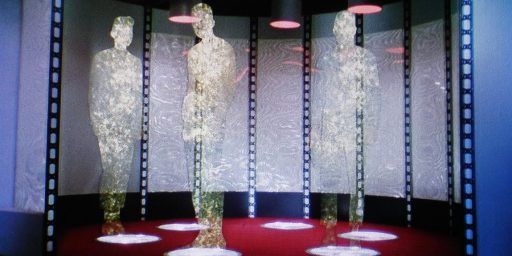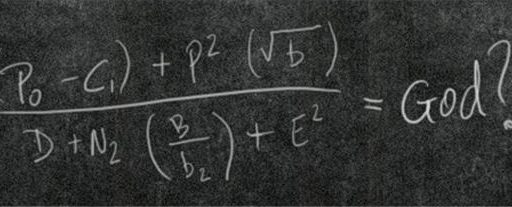Hawking Resolves Black Hole Riddle
New Scientist – Hawking cracks black hole paradox
After nearly 30 years of arguing that a black hole destroys everything that falls into it, Stephen Hawking is saying he was wrong. It seems that black holes may after all allow information within them to escape. Hawking will present his latest finding at a conference in Ireland next week. The about-turn might cost Hawking, a physicist at the University of Cambridge, an encyclopaedia because of a bet he made in 1997. More importantly, it might solve one of the long-standing puzzles in modern physics, known as the black hole information paradox. It was Hawking’s own work that created the paradox. In 1976, he calculated that once a black hole forms, it starts losing mass by radiating energy. This “Hawking radiation” contains no information about the matter inside the black hole and once the black hole evaporates, all information is lost. But this conflicts with the laws of quantum physics, which say that such information can never be completely wiped out. Hawking’s argument was that the intense gravitational fields of black holes somehow unravel the laws of quantum physics.
Other physicists have tried to chip away at this paradox. Earlier in 2004, Samir Mathur of Ohio State University in Columbus and his colleagues showed that if a black hole is modelled according to string theory – in which the universe is made of tiny, vibrating strings rather than point-like particles – then the black hole becomes a giant tangle of strings. And the Hawking radiation emitted by this “fuzzball” does contain information about the insides of a black hole (New Scientist print edition, 13 March).
Now, it seems that Hawking too has an answer to the conundrum and the physics community is abuzz with the news. Hawking requested at the last minute that he be allowed to present his findings at the 17th International Conference on General Relativity and Gravitation in Dublin, Ireland. “He sent a note saying ‘I have solved the black hole information paradox and I want to talk about it’,” says Curt Cutler, a physicist at the Albert Einstein Institute in Golm, Germany, who is chairing the conference’s scientific committee. “I haven’t seen a preprint [of the paper]. To be quite honest, I went on Hawking’s reputation.”
A reasonable enough thing to do. The boy’s wicked smart.
Though Hawking has not yet revealed the detailed maths behind his finding, sketchy details have emerged from a seminar Hawking gave at Cambridge. According to Cambridge colleague Gary Gibbons, an expert on the physics of black holes who was at the seminar, Hawking’s black holes, unlike classic black holes, do not have a well-defined event horizon that hides everything within them from the outside world. In essence, his new black holes now never quite become the kind that gobble up everything. Instead, they keep emitting radiation for a long time, and eventually open up to reveal the information within. “It’s possible that what he presented in the seminar is a solution,” says Gibbons. “But I think you have to say the jury is still out.”
At the conference, Hawking will have an hour on 21 July to make his case. If he succeeds, then, ironically, he will lose a bet that he and theoretical physicist Kip Thorne of the California Institute of Technology (Caltech) in Pasadena made with John Preskill, also of Caltech. They argued that “information swallowed by a black hole is forever hidden, and can never be revealed”. “Since Stephen has changed his view and now believes that black holes do not destroy information, I expect him [and Kip] to concede the bet,” Preskill told New Scientist. The duo are expected to present Preskill with an encyclopaedia of his choice “from which information can be recovered at will”.
Who says physicists aren’t fun and wacky guys?
Nature – Hawking changes his mind about black holes
“This will come as a surprise to physicists,” says Hawking’s Cambridge University colleague Gary Gibbons. “His style of doing science is quite dramatic: he will propose a thesis and defend it to the last, until it is overthrown by better reasoning.”
***
Hawking’s original view follows Einstein’s general theory of relativity, which predicts that, at certain locations in space, matter collapses into an infinitely small and dense point, called a singularity. The theory says that the force of gravity at this point is so great that nothing, not even light itself, can escape, hence the term ‘black hole’. Because the singularity is infinitely small, it cannot possibly have any structure and so there is no way that it can hold information. Any data about particles entering the black hole must be lost forever. The problem is that quantum theory, which describes space and matter on very tiny scales, contradicts this. Quantum theory says any process can be run in reverse, so starting conditions can theoretically be inferred from the end products alone. This implies that a black hole must somehow store information about the items that fell into it.
Hawking has always stuck resolutely to the idea that once information goes into a black hole, there is no way out. Until now. When ne**@na****.com asked about his change of heart, Hawking smiled and wrote: “My views have evolved.”
The remarkable about-face is the result of Hawking’s attempts to combine quantum theory with general relativity in a powerful new theory of quantum gravity. Hawking is due to present his latest ideas at the 17th International Conference on General Relativity and Gravitation, which runs from 18 July to 23 July in Dublin, Ireland. But he gave a preview of the talk at his department in Cambridge University last month.
He has been using a mathematical technique called the “Euclidean path integral”. The technique is extremely complex as it lumps all the possible histories of a system into one equation. First used by quantum physicist Richard Feynman, it has generally been applied to subatomic particles. But Hawking has been working for several years to apply the idea to black holes.
“The view seems to be forming in his mind that there isn’t a black hole in the absolute sense, there’s just a region where things take a very long time to escape,” says Gibbons. This suggests that black holes do not actually narrow to a singularity at all. So an object falling into a black hole is not completely obliterated. Instead, the black hole is altered as it absorbs the object. Although it would certainly be very difficult to retrieve any information about that object, the data are still there, somewhere inside the black hole, Gibbons says.
How could that information ever escape? The answer lies in one of Hawking’s greatest discoveries: that black holes slowly evaporate into space by losing particles from the very edge of the gravitational precipice at their rim, called Hawking radiation. The black hole eventually shrinks to a tiny kernel, at which point a growing torrent of radiation begins to leak out, potentially carrying the lost information with it.
But Preskill says that Hawking’s new take on quantum gravity rests on shaky mathematical foundations, and is unlikely to be embraced by the physics community. “I am sceptical about whether he has found a fully satisfactory resolution to the problem,” he says.
Rediff (via GoogleNews) – Hawking resolves black hole riddle
After nearly 30 years of arguing that a black hole destroys everything that falls into it, Stephen Hawking is saying he was wrong. In an announcement that has sent waves of excitement through the rarefied world of astrophysics, Prof Stephen Hawking claims to have solved one of the greatest mysteries of black holes, reports the Telegraph, London. The new theory, which solves a major paradox about the most mysterious objects in the universe, has generated a flurry of excitement among his Cambridge colleagues, the Telegraph said.
‘Black holes are regions of space where the gravitational force is so strong that nothing, not even light, can escape. Once thought to be purely destructive forces, they are now thought to play a crucial role in galaxy formation. Cosmologists believe that there are many types of black hole, ranging from mini holes with the mass of a small mountain to super-massive holes that lie at the centre of galaxies,’ it said. Their gravitational force is so powerful that everything is sucked inside. It was traditionally thought that once matter and light pass a black hole’s “event horizon”, then it can never escape. ‘In 1975, Prof Hawking made his most important contribution to cosmology by proposing that black holes emit tiny amounts of radiation – known as “Hawking radiation”. Eventually, all black holes will evaporate. He also claimed that his radiation contained no “information” about the matter sucked into the black hole,’ said the article. Once the black hole evaporates, all information about the black hole is lost. But under the laws of quantum mechanics describing the behaviour of the universe at the scale of individual particles, such information cannot simply disappear, the Telegraph said. ‘For 30 years Prof Hawking tried to get around the paradox by suggesting that the rules of quantum physics were different inside black holes – a solution that many colleagues were unhappy with,’ the article said.






Information from black holes?
Maybe that’s where Hillary’s billing records emerged from?
i look forward to see more details on the new approach to the problem…